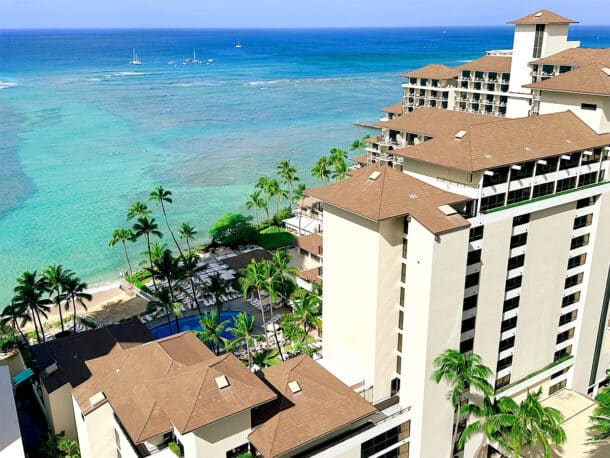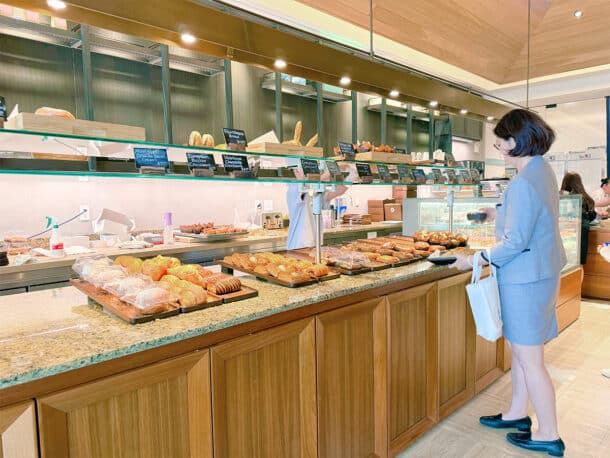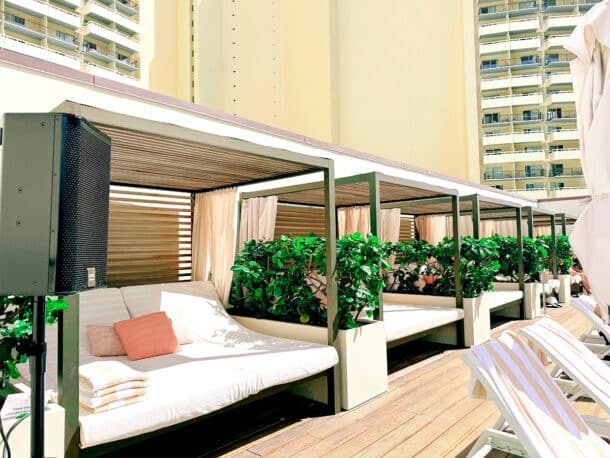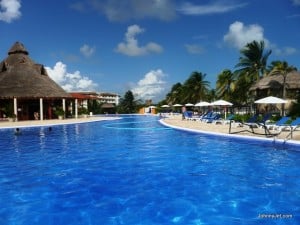 Riviera Maya Mexico is a top destination for millions of people and now I understand why. The climate, the jungle, the beach, the ancient ruins, and the culture of the Mayans make this a must- take vacation. I went for a slightly unusual reason – to experience the Mexican holiday which commemorates the dead!
Riviera Maya Mexico is a top destination for millions of people and now I understand why. The climate, the jungle, the beach, the ancient ruins, and the culture of the Mayans make this a must- take vacation. I went for a slightly unusual reason – to experience the Mexican holiday which commemorates the dead!
Celebrating the Day of the Dead? I had no idea why anyone would want to have a holiday about death. I do love Halloween but never really understood its origins until I went to Mexico. Halloween is a spooky derivative of this holiday that started with All Saints Day to honor our dead ancestors. Getting back to the roots of the holiday changed everything for me. I learned so much, and most of all, I wasn’t afraid: not to travel to Mexico, not to be pulled over by a Mexican policeman, and maybe not even of Sr. Death himself!
Sounds crazy, I know, but even though I think of myself as a pretty intrepid traveler, there are certain fears that are hard to overcome. Mexico has had a lot of negative press lately, and although I know it is a huge country, I have to admit, I was a little apprehensive about going.
Johnny told me I would love Mexico and may even want to move there! Well I guess I had to see what he meant.
Flying into Cancun was a non-stop breeze from JFK. I was met at the airport by Playa del Carmen Tours, which I was grateful for, because there were many people vying for my cab fare, and it was a bit overwhelming.
This trip consisted of visits to ancient Mayan ruins which coincided with the celebrations of the Festival of the Day of the Dead (October 31st and ending on November 2nd ).
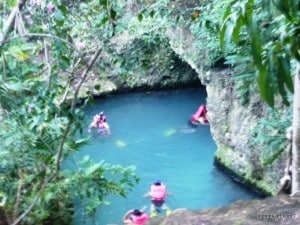 Riviera Maya is the Caribbean Sea side of the Yucatan peninsula and encompasses the Sian Ka’an biosphere which has a 125 mile coastline and is a protected and fragile ecosystem. Among the natural formations are cenotes – underground caves formed in the limestone. I actually went to a musical performance/play in one of them in Coba. The cenotes are great for exploring and swimming (some are underwater). In Sian Ka’an, we saw the ancient village of Muyil. A smaller version of some of the other early settlements, but with well preserved relics. Here we were met with a Mayan guide who told us about the ceremony of the bees. Mayan bees called Meliponas Bees have green eyes and don’t sting. Their honey is sacred to the Mayans. Certain animals and insects have great importance for their culture. The Mayans believe the Shamans (high priests) can shapeshift into animals or insects and our guide was completely sincere.
Riviera Maya is the Caribbean Sea side of the Yucatan peninsula and encompasses the Sian Ka’an biosphere which has a 125 mile coastline and is a protected and fragile ecosystem. Among the natural formations are cenotes – underground caves formed in the limestone. I actually went to a musical performance/play in one of them in Coba. The cenotes are great for exploring and swimming (some are underwater). In Sian Ka’an, we saw the ancient village of Muyil. A smaller version of some of the other early settlements, but with well preserved relics. Here we were met with a Mayan guide who told us about the ceremony of the bees. Mayan bees called Meliponas Bees have green eyes and don’t sting. Their honey is sacred to the Mayans. Certain animals and insects have great importance for their culture. The Mayans believe the Shamans (high priests) can shapeshift into animals or insects and our guide was completely sincere.
Next on the agenda was a visit to Xcaret (pronounced “ESCARAY”), an eco- archeological park dedicated to Mexican culture, history, and nature. For me, this was way better than Disney World! One of the permanent exhibits consists of copies of headstones from around Mexico. There are 365 graves representing each day of the year, set up on seven spirals (for the days of the week). This was really like going to an outdoor art gallery. As an artist, I was impressed to see the beautiful colors used in decorating the headstones. As an American, I was blown away by the tributes of families to their loved ones and wondered why our headstones don’t reflect the personality of the person underneath. One was covered in beer tops, homage to the beer drinker, another, had a statue of a beloved dog on top. Many were little homes, making a comfortable place for the spirit to return. Some had angels peeking out. Mosaic tiles and bright paint colors covered them all.
 The ancestors are honored every year during the Festival of the Day of the Dead. Altars are created with everything the loved one liked, especially food and drink choices. Pictures and personal items are put on the altar, along with candles which stay lit for the three days of October 31st through November 2nd . The candles help “light the way” back for the family spirit. I was privy to several sacred ceremonies, one at Xcaret, one at a Mayan cultural center, and one at Coba. Even the restaurants at the hotel I was staying at Ocean Hotels had alters. Some of the ceremonies were by Mayans and strictly of Mayan origin. Mexicans, who are not Mayan, have similar ceremonies and I felt honored to be part of the rituals, and “lighter” afterwards.
The ancestors are honored every year during the Festival of the Day of the Dead. Altars are created with everything the loved one liked, especially food and drink choices. Pictures and personal items are put on the altar, along with candles which stay lit for the three days of October 31st through November 2nd . The candles help “light the way” back for the family spirit. I was privy to several sacred ceremonies, one at Xcaret, one at a Mayan cultural center, and one at Coba. Even the restaurants at the hotel I was staying at Ocean Hotels had alters. Some of the ceremonies were by Mayans and strictly of Mayan origin. Mexicans, who are not Mayan, have similar ceremonies and I felt honored to be part of the rituals, and “lighter” afterwards.
I even observed a celebration in an actual cemetery in Playa del Carmen. We were there on the last night of the Festival and, to tell you the truth, I didn’t want to be there. The graves are all above ground in cement enclosures, and most of them were painted in bright colors, but not as pretty as the ones at Xcaret. For the Festival, some families were still there, walking around or standing by the grave. A concessionaire sold popcorn and beer! But what really blew me away, was a man playing his guitar and singing happy Mexican folk songs while his children and wife had a picnic on top of the grave. They were including the deceased into their party for the joyous occasion. It wasn’t sad at all.
Another important part of the ceremonial ritual is the last day, when different foods are offered and the candles are lit to help the spirit leave. After three days, even dead relatives get tiresome!
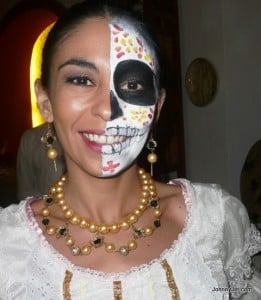 At Xcaret, the park attendees all wore special make-up and if they didn’t come already made up for the occasion, there were booths with free make-up and mirrors for self-decorating. They were dressed as skeletons and they were all happy. It was strange for me to see children in these costumes, and to see how they were raised not to be afraid of death. It is not creepy or menacing for them. Death is a natural part of life and they include it in there lives. I wondered how Mexicans feel about American Halloween; they must think we are really odd when they see kids wandering around in outrageously evil costumes. There are special events and workshops for children during this time. One lady was telling stories about a dog that died all while acting in a traditional costume with skull makeup. Another room had candied skulls made from amaranth and honey that children decorated in bright colors signifying vitality. There were plays and musicals and dances – all featuring Sr. Death, who was not the evil villain, but just part of the celebration.
At Xcaret, the park attendees all wore special make-up and if they didn’t come already made up for the occasion, there were booths with free make-up and mirrors for self-decorating. They were dressed as skeletons and they were all happy. It was strange for me to see children in these costumes, and to see how they were raised not to be afraid of death. It is not creepy or menacing for them. Death is a natural part of life and they include it in there lives. I wondered how Mexicans feel about American Halloween; they must think we are really odd when they see kids wandering around in outrageously evil costumes. There are special events and workshops for children during this time. One lady was telling stories about a dog that died all while acting in a traditional costume with skull makeup. Another room had candied skulls made from amaranth and honey that children decorated in bright colors signifying vitality. There were plays and musicals and dances – all featuring Sr. Death, who was not the evil villain, but just part of the celebration.
A visit to the ancient city of Coba to see and explore the pyramids was incredible. It was quite a different experience than at Muyil. For one thing, they are spread out more and it requires a bicycle to get to all of them. Bikes for hire and people for hire to ride you on the back of their bike in a carriage are available. Coba was a major Mayan city from 250 AD to 900AD.
Here I saw a Coati in the wild (a native raccoon-like mammal with a pointy nose and long tail that sticks straight up in the air) and climbed tall pyramids which had incredible views. It was amazing to be actually stand on and touch these ruins which should be in a museum. After all these years they are still well preserved. The ball court is always a very important part of the ancient Mayan cities.
Afterwards, we went to the current town center to have a special ceremony and eat commemorative foods like muc-bi-pollo, which is chicken and corn wrapped in banana palm leaves, buried in the ground, and cooked atop fire in the underground pit. We had pan de muerte (bread for the Day of the Dead celebration), and then went to visit the Mayan children of the village to see the pottery they make and perhaps purchase some of their wonderful work. The Mayan culture is dwindling and it felt good to support their venture. The visit culminated in a traditional Mexican feast and a sacred blessing by a Mayan Shaman. Each person attending was granted a private moment with the Shaman.
After dinner, there was an unforgettable excursion to a cenote, an underground limestone cave, where dancers and actors depicted the most crucial ball game while a skeleton “moth man” played the drums. The actors were all dressed in the typical football costume of the ancient Mayans, a loin cloth, and were made up as skeletons as well. They played “the game”, also known as “Pok a Pok”, which is a combination of soccer and basketball as they use only their feet, but have to get the ball in a hoop. The most difficult part of the game is that it is played on the sloping side of a pyramid (the ball court), designed just for the game. This game determined important decisions, and the losers were usually killed. There have been many theories about this game and some even say the ball was the skull of a human, wrapped in rubber!
I recommend the website OnlyRivieraMaya.com to find hotels of all types in the area. I stayed at the large, modern beachfront Ocean Maya Hotel. It was my first all-inclusive hotel since my early experiences at Club Med. I enjoyed my quiet room. The main drawback was the far walk from the main lobby. My room was close to the beach, though. The reception area was huge, open air and decorated with marble everywhere. Many sectional sofas, a bar, a large open courtyard, and an incredibly high ceiling displayed opulence and paid tribute to the Mayan palaces. I ate breakfast every morning at the hotel and was impressed with the enormous selection at the buffet – lots of fresh fruits, fresh juices, pastries, and a hot bar as well. One could easily consume their daily caloric requirement in one sitting! I also had lunch at the café by the beach which was mostly fried foods and salads. The hotel has several restaurants on site and the Japanese restaurant was great, although I was really craving Mexican food, and it was nowhere to be found!
 I finally got it at back at Xcaret, where they had authentic Yucatan foods that I had never heard of, but really enjoyed. There was a pumpkin dessert, a chocolate drink, Mexican beer, of course, and something called Salbute de Pollo Chaya. Salbute is basically a small corn tortilla with chicken, a green vegetable called chaya, tomatoes, and a delicious sauce.
I finally got it at back at Xcaret, where they had authentic Yucatan foods that I had never heard of, but really enjoyed. There was a pumpkin dessert, a chocolate drink, Mexican beer, of course, and something called Salbute de Pollo Chaya. Salbute is basically a small corn tortilla with chicken, a green vegetable called chaya, tomatoes, and a delicious sauce.
I enjoyed the tours to the Mayan ruins and there are several good touring companies that can accommodate you. AllTourNative.com is one has great sustainable practices and benefits the rural Mayan communities as well. Ek Balam, south of Tulum, is on their list and was on mine as well. This is a newly discovered archeological site and not very touristy at all, yet have all the important features of a Mayan city: the ball court, the pyramids, and some wonderful sculptural tributes to Ek Balam which means the Black Jaguar.
We had lunch at La Casona; a typical Colonial home built in 1894 and turned into a large open air restaurant. This is in the city of Valladolid, a classic Mexican town with a typical town plaza and Catholic Church.
There is so much to do in the Riviera Maya. I didn’t even mention the cosmopolitan city of Playa del Carmen, for great shopping and dining. I saw all this in three days! Imagine what you could do if you had more time!
NOTE: This trip was sponsored in part by Riviera Maya .


